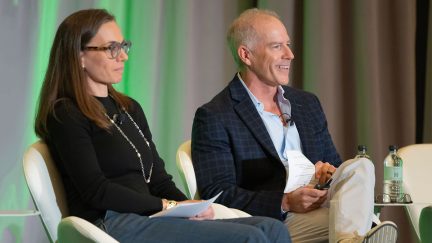Never miss a story — sign up for PLANADVISER newsletters to keep up on the latest retirement plan adviser news.
Tax Legislation + Trends = Deferred Comp Sales Opportunities
The key legislative provisions, effective January 1, 2013 (see box: “Key Provisions of American Taxpayer Relief Act of 2012”), appear to have only personal tax implications for higher-income individuals, not the companies they work for. In addition to this legislation, higher-income employees were also impacted by increased Medicare taxes and taxes on net investment income (including dividends and capital gains) as a result of provisions of previous health care legislation.
But as the adage goes, “All business is personal.” The tax environment created by these changes has implications for organizations and their key employees. And that translates to a renewed interest in new and existing nonqualified deferred compensation plans.
There are five considerations that the new tax legislation creates for NQDC plan participants:
1. Higher marginal tax rates encourage deferrals into NQDC plans. By reducing current taxable income, deferrals reduce a participant’s taxable income at their highest marginal rate. The participant can pay taxes at a lower rate by taking installment payments after retirement in many circumstances.
2. Deferrals into a NQDC plan offer the potential to reduce or eliminate the impact of the tax changes for participants who are close to certain income thresholds. By deferring income, individuals could fall below the thresholds triggering additional taxes.
3. Higher marginal income tax rates and higher capital gains rates make pre-tax deferrals more attractive vs. after-tax investing. Investment gains in deferred compensation accounts are not currently taxed, and also compound on a tax-deferred basis. Compare this to the situation for after-tax investing. Income from interest, dividends and realized capital gains for highly compensated employees will be taxed at the corresponding increased ordinary income tax or capital gains rates depending on the nature of the income under the new legislation.
4. Reduced uncertainty over the future taxation of NQDC plan distributions. The tax rates made “permanent” in this legislation offer participants more clarity on receiving future plan distributions. With effective planning of deferred compensation distributions, key employees can potentially reduce their tax burden by spreading out distributions at retirement (as allowed by plan design) and coordinating with qualified plan distributions and Social Security.
5. NQDC plan deferrals offer more control over taxation timing. Although some control may be exercised over when realized gains are triggered, paying taxes inthe current year on dividends, interest and some capital gains will almost always occur. NQDC plan participants have flexibility to elect when to receive distributions based on the options outlined in the plan documents. This flexibility provides greater control over the timing of whenincome is actually received and taxes paid on it. IRS guidelines for NQDC plans provide plan participants the flexibility of delaying distributions beyond the original scheduled timing.
Some disincentives existed to participating in deferred compensation plans prior to the passage of this legislation. First, tax rates on high-income earners were at historic lows. Second, taxes on capital gains and dividends were also quite low (maximum 15% at the federal level). And finally, due to the “temporary” nature of the soon to expire tax rates, individuals were somewhat reluctant to defer current income into a very uncertain and potentially rising tax environment.
(Cont’d…)
According to research with NQDC plan participants in late summer of 2012(see chart–“Participants Planning to Increase Their NQDC Plan Contributions…” Source: 2012 Survey of NQDC Plan Sponsors & Participants, Principal Financial Group), 35% of participants expected to increase their deferrals in the coming year and 60% planned to maintain the same contribution amount. Nearly 2 out of 3 who planned to increase contributions identified the expected increase in tax rates as the reason. So, regarding tax legislation, it seems NQDC plan participants were very accurate in their collective predictive skills.
An uncertain tax environment, coupled with a difficult economic environment, made nonqualified deferred compensation a tough topic for advisers to discuss with clients and prospects. Many plan participants clearly saw value in the benefits provided, and many plan sponsors chose to continue offering NQDC plans, new sales were tough to come by.
With the economy improving, companies returning to long-term profitability, and the tax environment for higher income taxpayers settled (at least for the time being), it’s a good time to approach clients and prospects regarding the benefits of nonqualified deferred compensation plans.
For employers:
· The ability to recruit, retain, reward and retire their most key employees
· The ability to provide discretionary employer contributions to retain and reward key employees in a competitive environment
· The ability to control compensation through vesting and payment timing
For participants:
· The ability to save on a tax-deferred basis in excess of qualified plan limits
· The ability to better control the timing and rate of taxation
· With proper plan design, the ability to design an individual investment strategy
For you as an adviser, the ability to provide value to your clients and prospects by offering them your expertise to take advantage of the benefits of nonqualified deferred compensation.
--Andy Dalgliesh, CPA*, MBA, CLU®, ChFC® - Director, Nonqualified
*CPA does not provide accounting or tax services on behalf of the companies of the Principal Financial Group®.
While this communication may be used to promote or market a transaction or an idea that is discussed in the publication, it is intended to provide general information about the subject matter covered and is provided with the understanding that none of the member companies of The Principal are rendering legal, accounting, or tax advice. It is not a marketed opinion and may not be used to avoid penalties under the Internal Revenue Code. Clients should consult with appropriate counsel or other advisers on all matters pertaining to legal, tax, or accounting obligations and requirements.
Insurance issued and plan administrative services provided by Principal Life Insurance Company. Securities offered through Princor Financial Services Corporation, 800/247-1737, member SIPC and/or independent broker/dealers. Securities sold by a Princor Registered Representative are offered through Princor®. Principal Life and Princor® are members of the Principal Financial Groupâ, Des Moines, IA50392.
You Might Also Like:

Rethinking Opportunities for RIA Growth

Advisers Step Up as Clients Face Market Uncertainty


